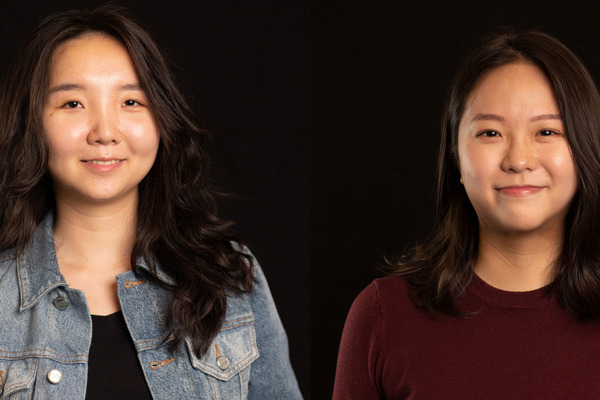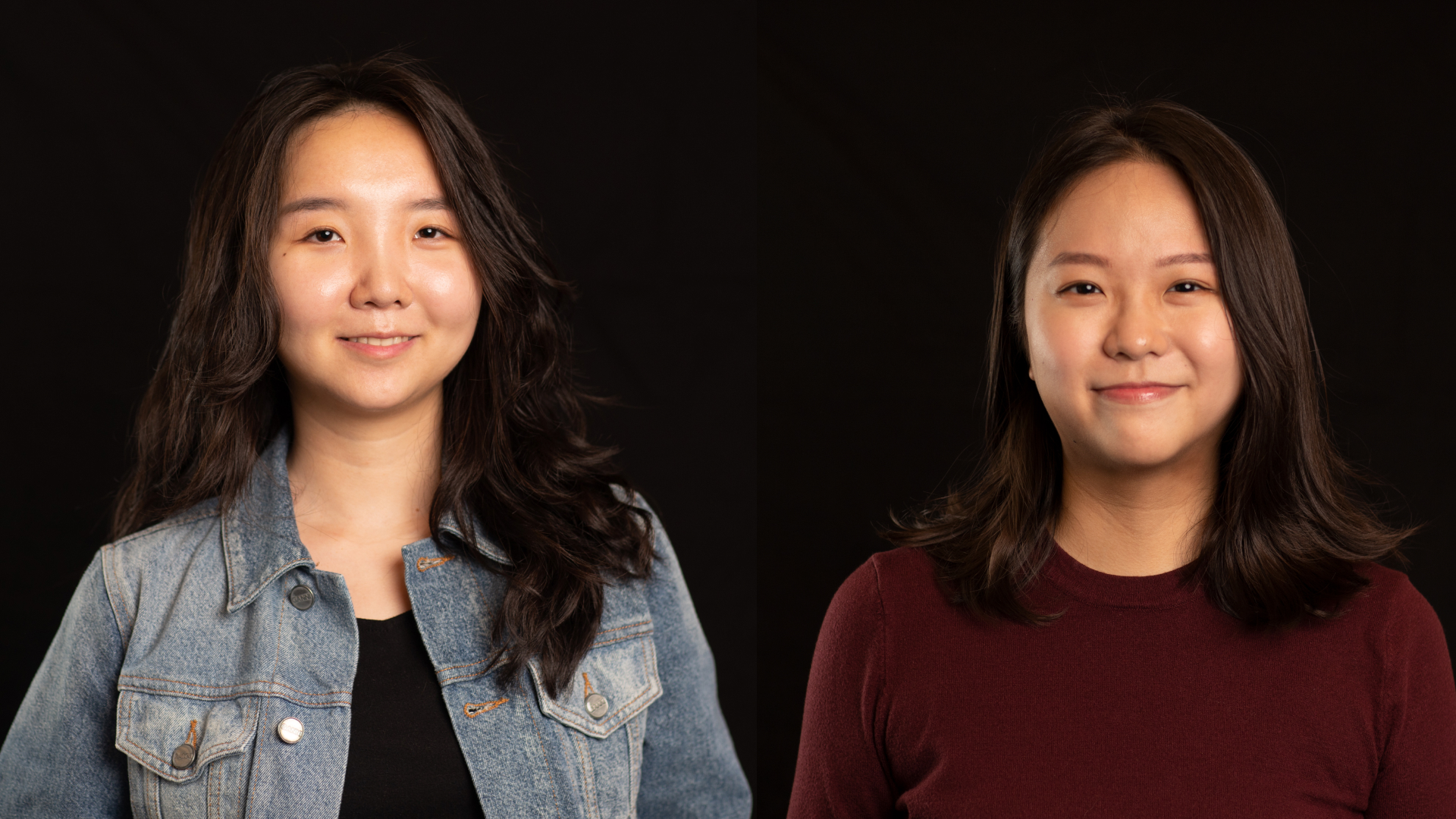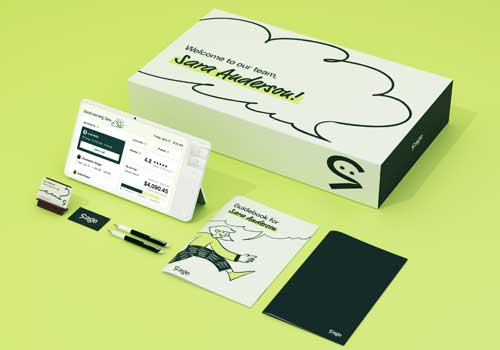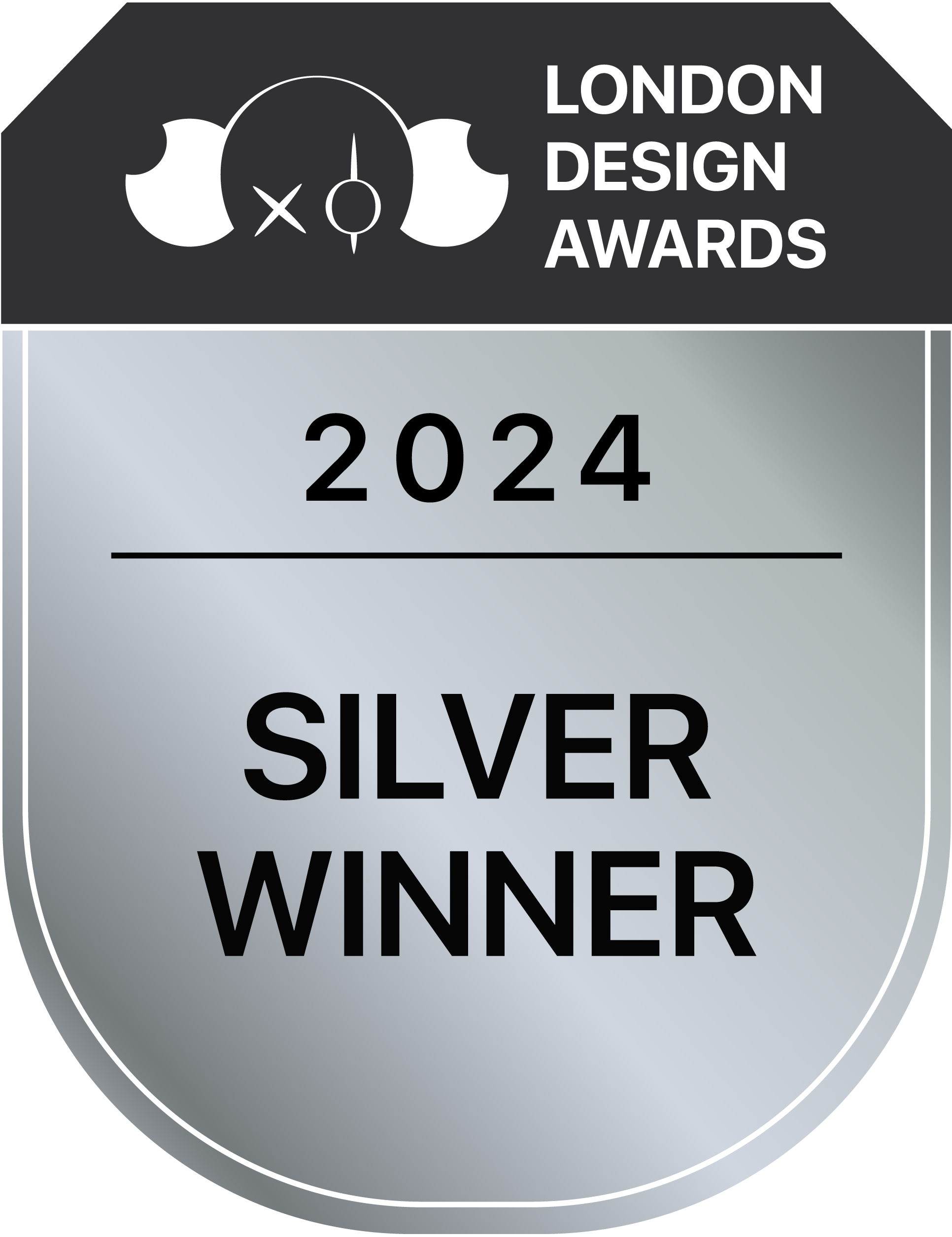
Yeonseo Lee & Ina Kang
1. Please give us a brief bio of yourself and your design background.
YL: I’m Yeonseo Lee, an experienced designer with a degree in Design and Technology from Parsons. With a background in Visual Communication Design, I specialise not only in UX but also in creating visually compelling graphics.
IK: I'm Ina Kang, a user experience designer in the tech industry. With a background in psychology and business, I’ve had the chance to dive into various start-up environments and academic research, covering areas like accounting, marketing, visual perception, and cognitive psychology. My master’s program at Parsons allowed me to explore different technologies and bring my product ideas to life, blending my interests in business models and behavioral psychology. Currently, I’m pursuing my career as a UX designer in NYC.
2. What made you become/why did you choose to become a designer/artist?
YL: When I was first introduced to user experience design during my undergraduate studies, I immediately fell in love with it. I found it fascinating that design could serve as a form of communication—understanding others' situations by collecting insights through research and then responding with possible design solutions. This realisation led me to dive deeply into the field of user experience design.
IK: Through my diverse background, I’ve seen firsthand how the intersection of design, psychology, and business can address complex problems in User Experience design. I truly enjoy synthesising research insights and generating innovative design ideas. This process has naturally guided me to become a user experience designer, where I get to blend these elements to create impactful and effective solutions.
3. Tell us more about your agency/company, job profile, and what you do.
YL: As an experienced designer, I focus on creating designs that help customers understand products and enhance their overall experience with them. I work across various media to ensure that our products are not only functional but also user-friendly and engaging.
IK: I’m currently based in New York, where I work at a software company designing platforms to build efficient data pipelines. I design 0 to 1 workflows of data integration and developer experience to streamline company products mainly focused on heavy-coding users including, developers, data scientists, and ML engineers.
4. What does “design” mean to you?
YL: To me, “design” is a way of communicating with others. Through “design,” we can deliver messages and offer possible answers to questions that arise in our daily lives.
IK: To me, design is all about creating solutions that make life better and more enjoyable. It’s a process of understanding people’s needs and finding ways to address them through thoughtful and purposeful choices. Design isn’t just about how something looks; it’s about how it works and how it impacts the user experience.
5. What’s your favourite kind of design and why?
YL: My favourite kind of design is user-friendly design. As a designer, I find it deeply rewarding to step into the users' shoes and craft solutions that truly address their needs and elevate their experience.
IK: I appreciate design that is seamless and unobtrusive. I believe that with minimal visual clutter and unnecessary elements, a design should be self-explanatory and not distract users from their goals. The best designs allow users to focus on their tasks without any friction or confusion.
6. To you, what makes a “good” design?
YL: I would say that if the user can interact with a design without questioning it, it’s a good design.
IK: A good design balances several key elements. First, it has to be functional, meaning it solves the problem it’s meant to address effectively. Secondly, it should look good and be visually appealing, though this doesn’t mean it has to be overly complex—sometimes simplicity is key. Lastly, usability is crucial; the design needs to be user-friendly and intuitive so people can easily interact with it.
7. How did you come up with the idea for your award-winning design?
We saw a video where each generation was asked questions that resonate with today’s young adults. The video went viral because the answers from the senior panel inspired and uplifted many young people. This experience gave us an idea for addressing some of the social challenges seniors face after retirement.
8. What was your main source of inspiration for this design?
Our design thinking primarily focused on creating age-friendly job opportunities for retired seniors. We aimed to improve the remote working experience by thoughtfully designing both the onboarding process and the work environment.
9. Do you think your country and its cultural heritage has an impact on your design process?
For us, coming from South Korea, our design project was deeply influenced by the specific challenges faced in our society. South Korea’s super-aged population and extremely low birth rate, coupled with the high suicide rate among the elderly, significantly shaped our approach. These pressing issues highlight the harsh reality that many seniors face. Understanding this context led us to focus on improving the quality of life for retirees.
Our project, Sage, aims to address the critical point when people transition into retirement. By designing a solution that helps seniors maintain their well-being and independence, we’re directly responding to the unique needs and challenges identified in our cultural and societal landscape.
10. Congratulations! As the winner of the London Design Awards, what does it mean to you and your company and team to receive this award distinction?
Thank you! It’s a great honour to receive this award. I would like to thank my teammate, who completed the work with dedication and passion, and those who have given us all their love and support.
11. Can you explain a bit about the winning work you entered into the London Design Awards, and why you chose to enter this project?
Sage is an online platform that empowers seniors by offering meaningful and age-friendly remote job opportunities to share their 30+ years of wisdom and expertise with young adults seeking mentorship. It aims to enhance seniors' financial, social, and intellectual fulfillment after retirement.
Through 1:1 calls, podcasts, and community interactions facilitated by a dedicated device and app, senior mentors guide young adult mentees on various topics such as careers and personal relationships. Our team wanted to validate our design and business model through this entry and showcase our project that we believe could address a significant social issue.
12. What were the main challenges you faced during the design process, and how did you overcome them?
The main challenge of the Sage project was designing two distinct user interfaces tailored to different user demographics: young mentees using the mobile app and elderly mentors using the custom Sage device. Ensuring age-friendly interfaces for seniors while maintaining a modern and intuitive design for mentees required careful consideration of usability, accessibility, and user preferences.
Balancing the need for simplicity and functionality on the Sage device, with features like larger fonts, intuitive physical buttons, and an easy troubleshooting path, while providing a seamless mobile app experience for mentees, presented a UX challenge in catering to diverse user needs and ensuring a positive user experience for both generations.
13. How do you think winning this award will impact your future as a designer?
YL: Winning the London Design Awards has greatly boosted my confidence in my design process. This invaluable experience will definitely help me grow and develop further as a designer. I'm incredibly excited to see how far this journey will take me!
IK: The London Design Awards provided invaluable validation and affirmed our creative vision. This is huge, especially in the design industry where feedback and recognition are key drivers of growth and innovation. With this enriching experience, I feel more confident and comfortable sharing my ideas with a broader audience, and can’t wait to see how it will elevate me as a designer!
14. What are your top three (3) favorite things about the design industry?
Boundless Creativity: Every project offers a new opportunity to innovate and think outside the box.
Real-World Impact: Design improves daily life and can drive positive change.
Collaborative Spirit: Working with diverse teams leads to richer ideas and solutions.
15. What sets your design apart from others in the same category?
The essence of Sage is to provide a mutually beneficial platform where seniors can leverage their extensive experience to mentor younger generations, thereby maintaining their financial stability and social engagement. It aims to bridge the gap between generations, fostering valuable relationships and knowledge transfer in an age-friendly and technologically accessible environment.
The platform is powered by senior-friendly technology and a system with an intuitive interface with personalised tech support run by trained Sage representatives. The platform's tailored design for an aging society sets it apart from other solutions, ensuring effective mentorship and connections between generations.
16. Where do you see the evolution of design industry going over the next 5-10 years?
Looking ahead, there are a few exciting trends shaping the design industry. First up, AI is going to play a much bigger role. It is already handling repetitive tasks and even helping with generating ideas and prototypes, which can really streamline our workflows and spark new creative possibilities.
But with AI taking on more of the routine work, designers will need to focus on synthesising insights, envisioning the bigger picture, and guiding the creative direction. It’s about moving beyond just the design process to shaping the visions and strategies that drive innovation.
17. What advice do you have for aspiring designers who want to create award-winning designs?
YL: It's not just about the project; it's also about the presentation! Remember, a great project needs an equally great presentation. So, always save some time for organising and showcasing your work!
IK: Don’t be shy about asking for feedback from your peers, mentors, or industry pros. Their insights can really help polish your designs and boost your chances of success. And don’t forget to document your process! Sometimes the story behind your design is just as captivating as the design itself. Sharing how you arrived at your ideas can give judges and audiences a deeper appreciation of your work.
18. What resources would you recommend to someone who wants to improve their skills in the design industry?
There are so many awesome online resources, but some books are classics for a reason. I highly recommend diving into these books by design professionals:
"The Design of Everyday Things" by Don Norman: This book is a must-read for anyone in design. It focuses on making things user-friendly and understanding how people interact with products.
"Don't Make Me Think" by Steve Krug: If you’re into designing websites or apps, this one’s a gem. It’s packed with straightforward advice on creating intuitive, easy-to-use designs.
"Refactoring UI" by Adam Wathan and Steve Schoger: This is perfect for anyone looking to up their design game. It’s full of practical tips on making your designs look polished and professional.
19. Tell us something you have never told anyone else.
Sorry, we signed an NDA :)
20. Who has inspired you in your life and why?
YL: My colleagues have been a huge source of inspiration for me. They are all incredibly thoughtful and talented, and I've grown so much by watching and working alongside them.
IK: One of my biggest inspirations has to be my friend Esther from high school. She introduced me to the world of UX design, and it was a total game-changer for me. Thanks to her, I made a huge career switch from Psychology and Business to Design. That moment felt almost magical—it completely reshaped my life and led me to NYC, where I got to pursue my passion as a designer. I’m incredibly grateful for her guidance and the impact it’s had on my journey.
21. What is your key to success? Any parting words of wisdom?
YL: I would say that doing a little bit each day, even if it’s not perfect, is key to success. Trust the process, and you'll see progress over time.
IK: Embrace the empty (digital) canvas with confidence. Take it step by step, pixel by pixel, and you'll make progress. Keep going, and you'll get there!


